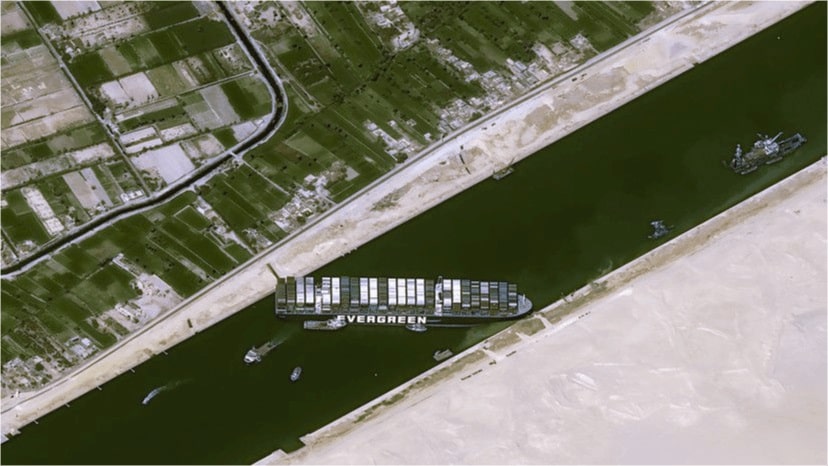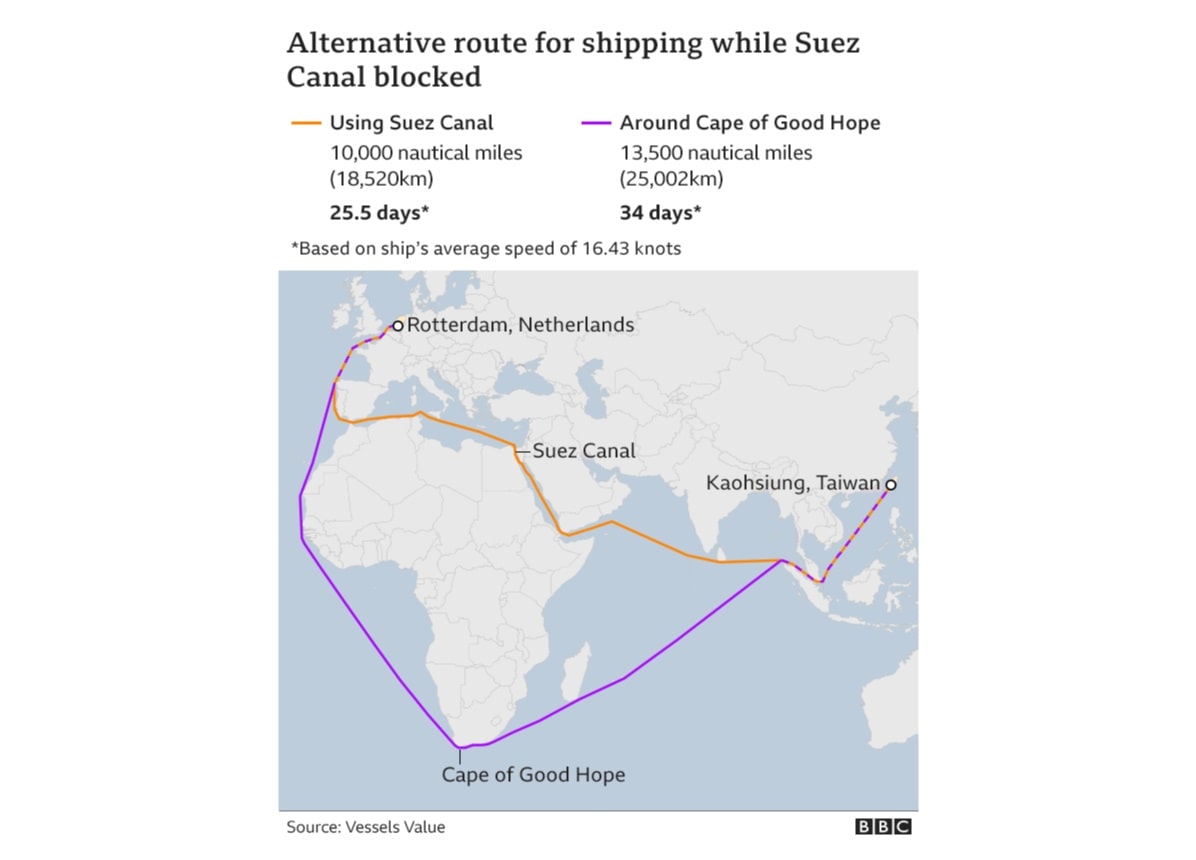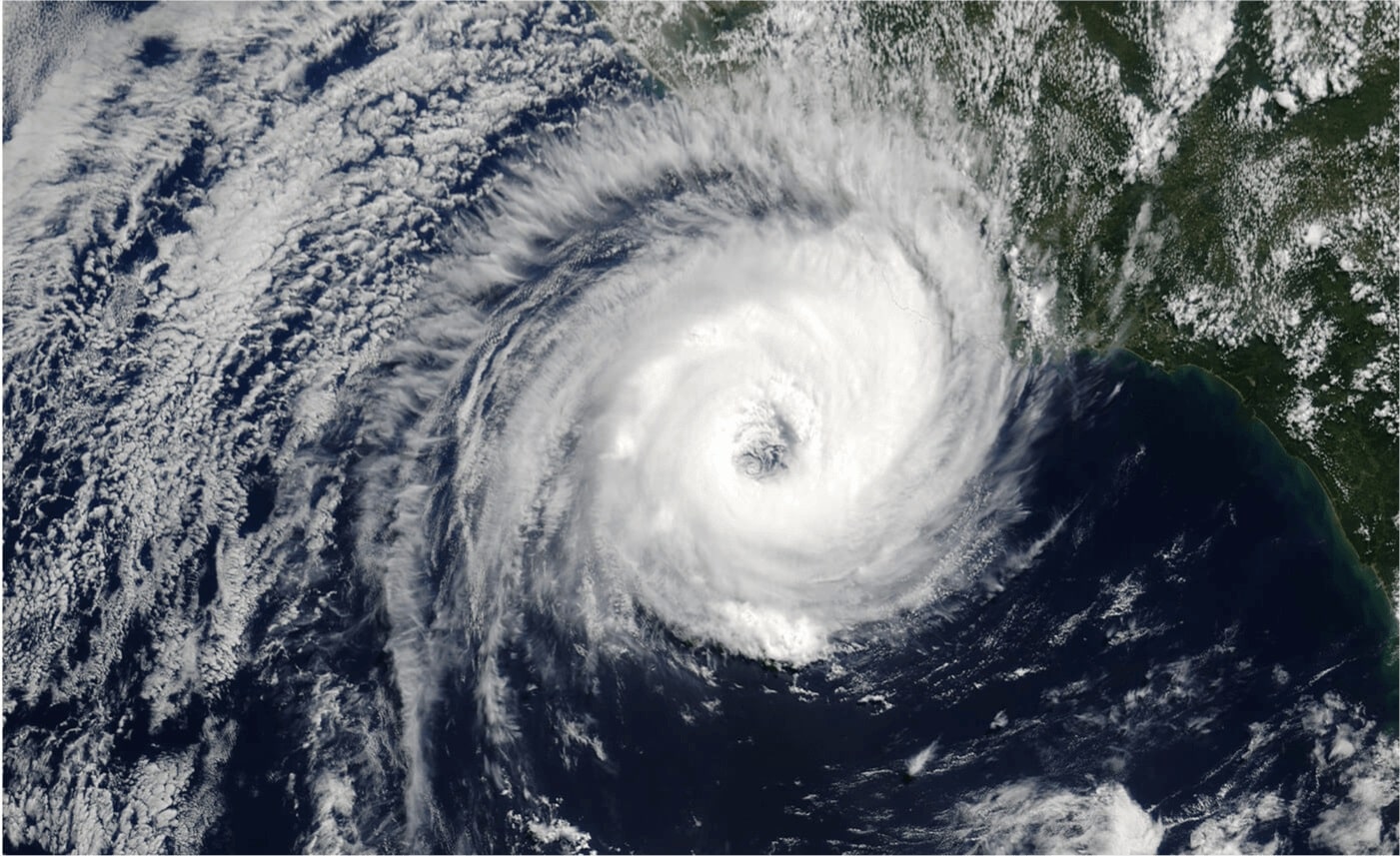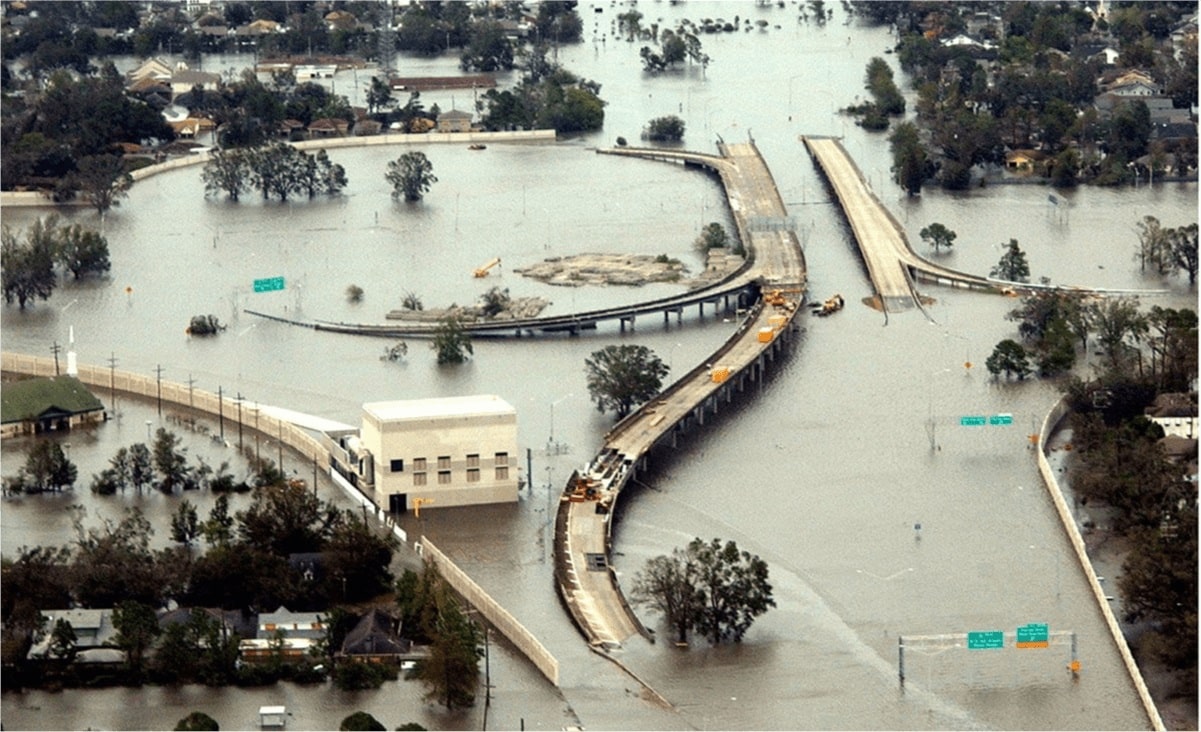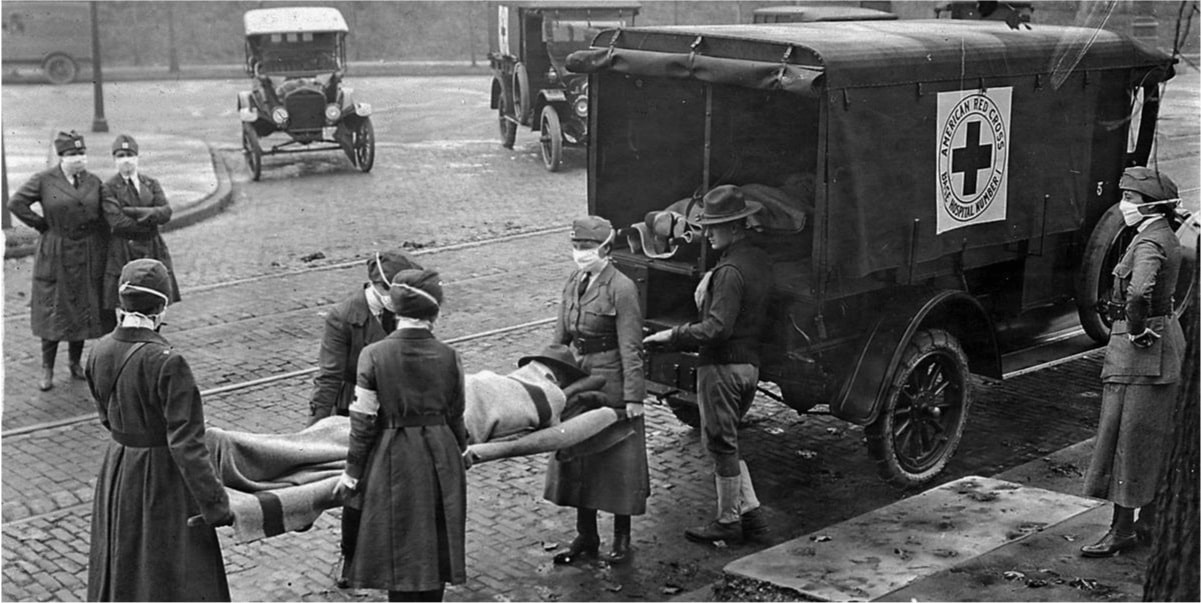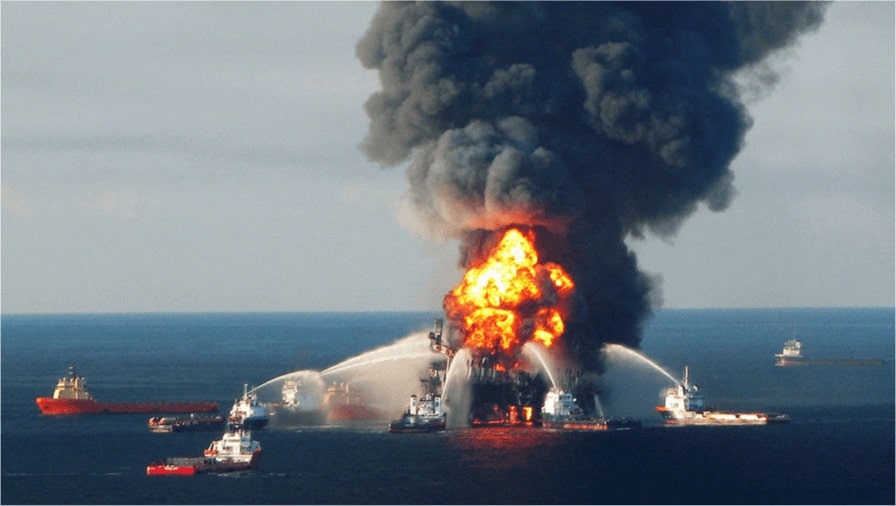- MAIN PAGE
- – elvtr magazine – FOUR ACCIDENTS THAT AFFECTED THE ECONOMY OF ENTIRE COUNTRIES
FOUR ACCIDENTS THAT AFFECTED THE ECONOMY OF ENTIRE COUNTRIES
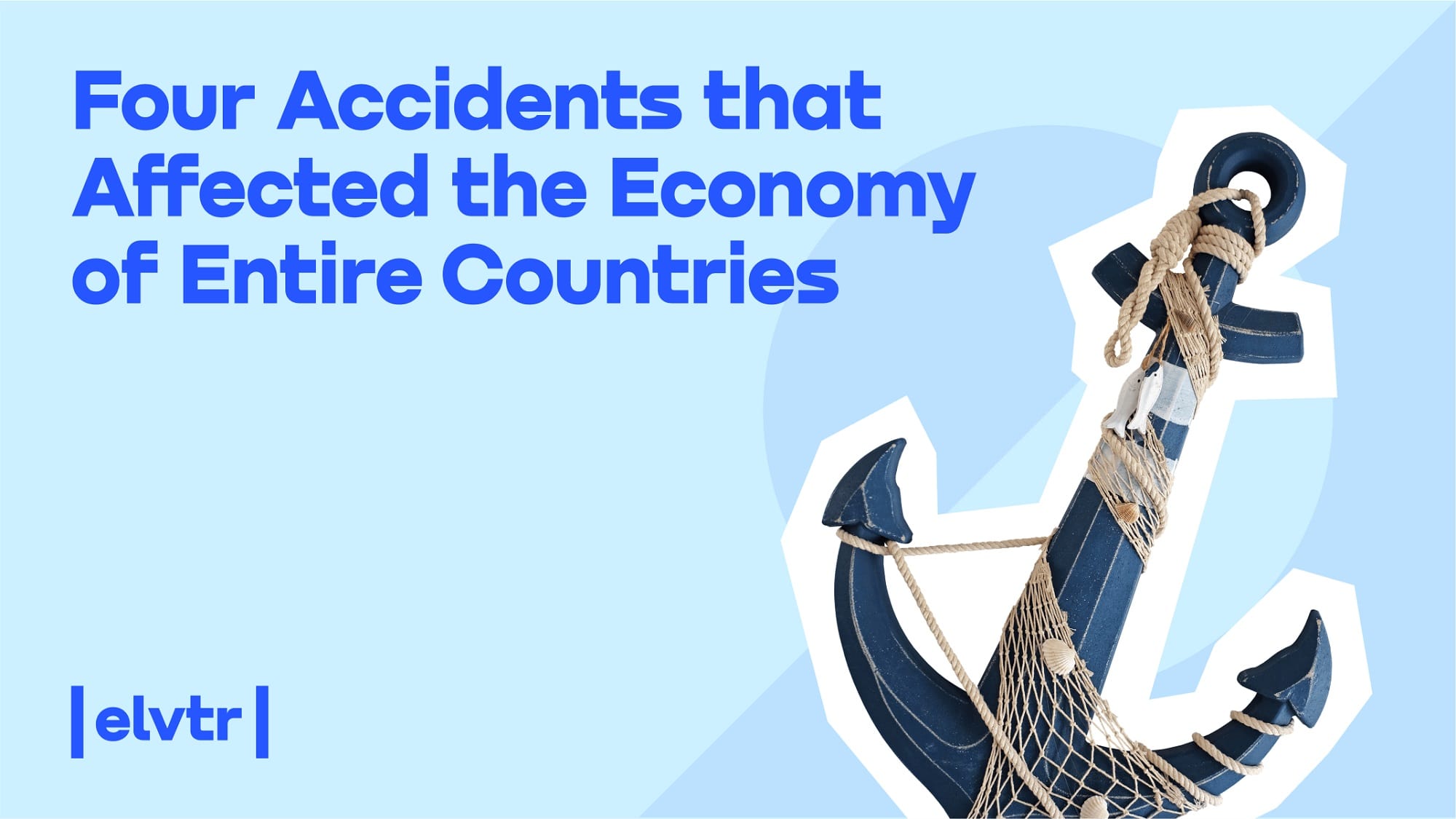
Due to COVID-19, the world economy has lost at least 4.5% of its annual GDP – almost $4 trillion. The 2020-2021 pandemic showed how easily and unpredictably one accident can affect the economy. The more the world is globalized and the countries are trade-related, the greater the scale of the consequences.
We found and analyzed another 4 examples when an unpredictable situation had a severe impact on the economy of an entire country or even worldwide.
#1. Ever Given Ship in the Suez Canal
What happened: оn March 23, 2021, the container ship Ever Given, heading from Malaysia to the Netherlands, ran aground in the Suez Canal, completely blocking it. The channel through which 12% of all trade in the world passes was blocked for almost a week.
Ever Given ran aground because of bad weather and the captain's mistake. While a whole flotilla of tugboats tried to move the container ship, 450 merchant ships were waiting for the "liberation" of the Suez Canal.
Some ships went around the whole of Africa to get to Asia. In addition to the lost time, they all spent an extra $400,000 on fuel to come all that way. Here's what that route looked like:
Economic impact: the management company of the Suez Canal lost $95 million in 6 days. The total value of the "blocked" goods amounted to $9.6 billion daily. Every hour of ship delay cost global trade $400 million in revenue.
Since the Suez Canal is the only shortest route from Asia to Europe, all oil from the Gulf states is transported through it.
As of 2020, 1.74 million barrels of crude oil out of a global 39.2 million barrels were transported daily through the canal. Therefore, the news about blocking this route raised the world prices for oil by 2% since many oil tankers from the Persian Gulf got stuck in the Suez Canal. No one knew when Ever Given would move. This caused a lack of oil. Oil prices increased, although for three weeks before they fell rapidly due to lockdowns. The cost of transporting oil products by sea has doubled during six days of "downtime."
After almost a week, Ever Given managed to take off the aground. It took a couple of days to recover the usual navigation regime. Oil prices fell following the news about the unblocking of the channel. At the same time, the Suez Canal Administration had to double its passing capacity. In the early days, 100 ships a day passed through it with the help of tugboats.
At present enterprising Egyptians started selling tickets to the place where Ever Given ran aground. It became a real tourist destination.
#2. Hurricane Katrina in the USA
What happened: in August 2005, Hurricane Katrina, the most catastrophic in the history of United States and the 6th most devastating in the history of observing the Atlantic, hit the southern states of Louisiana, Texas, Florida, and Mississippi. The wind speed reached 280 km/h.
The first victims appeared almost immediately after the hurricane reached the coast: 1,600 people died, and New Orleans, with 400,000 inhabitants, was completely flooded. About 1 million people were left without electricity and phone connection.
Different parts of the city were underwater for about two weeks. New Orleans was flooded with the crime. This region was already considered one of the poorest and most unsafe in the United States. Katrina just exposed all its problems. Looters robbed flooded homes and shops, and the murder rate reached a record 93 per 100,000 people. At that time, New Orleans ranked among the most dangerous world cities.
The fact was that shortly before the arrival of Katrina, local residents were evacuated from Louisiana, Texas, Florida, and Mississippi due to the threat of a powerful hurricane. Almost everyone who had a car left the cities. Only the poorest people who did not have personal transport or another opportunity to leave stayed to face Katrina.
Economic impact: the hurricane hit not only the southern states. Its consequences influenced the entire world as the oil and cotton industries of the USA were concentrated in this area. At the same time, the region was considered one of the least prosperous in terms of living standards in the United States. Katrina only worsened the situation. Here's how the hurricane affected the economy:
- 30% rise in unemployment. 12% of residents (214 thousand jobs) lost their jobs in Louisiana, and 23% – in Mississippi. At the same time, out of 1.5 million who moved, 600 thousand people never returned home.
- $40 billion in insurance losses. The number of claims to US insurance companies was the largest in the history of the industry.
- The rise in oil, petrol, and gas prices. This region produced 29% and processed 47% of all oil in the United States before the hurricane. The day after the storm, oil production completely stopped. As a result, the cost of oil in the United States jumped to a record high of $70 per barrel, while wholesale prices on international markets increased by 5%. Ten months after the hurricane, annual oil production was still 30% less than before Katrina.
- The collapse of the entertainment industry. More than 14,000 people worked in casinos on the Gulf Coast before the disaster. After the hurricane, tax revenue from gaming casinos in Mississippi fell by $500,000 daily. This lasted until the new crisis in 2008.
- The country’s GDP growth decreased to 1.8%. For comparison, the US economy grew by 4.2% the year before the hurricane.
- Damage to forestry in southern Mississippi. This industry accounted for 10% of all state jobs. The hurricane damaged more than 5,300 km2 of forest.
#3. Spanish Flu Pandemic in 1918–1920
What happened: an epidemic of unknown flu broke out in the US state of Arkansas in the spring of 1918. The disease got its name because Spanish newspapers were the first to sound the alarm. There were three pandemic waves in total, but the 1919 epidemic was the deadliest.
The disease affected young people, and mortality reached an average of about 15%. In different countries, it ranged from 3 to 20%. These were the last years of the First World War: many Europeans lived in conditions of complete lack of sanitation. They did not have enough food and drinking water.
The situation was even worse in the rest of the world. In the island state of Samoa in the Pacific Ocean, 20% of the population died of the Spanish flu; in Spain – 12%; in the USA – 7%. In India, the disease took the lives of 18 million people, which is the same number as the First World War. For all time, 40 million people became victims of the pandemic. It was 2% of the total world’s population.
Economic impact: there were little statistical data in the 20s of the last century. This greatly complicated the estimate of the actual damage caused by the Spanish flu to the world economy. Much of the information researchers now possess is taken from newspapers, as it was the primary news source back then. Here is some of that data:
- On average, after the pandemic, real GDP fell by 6% and consumption of goods and services – by 8% in each country. A similar situation could later be observed during the 2008-2009 crisis. At the same time, US GDP, to everyone's surprise, fell by only 1.5%.
- A sharp decline in stock and government bond yields. At the beginning of the 20th century, securities were in great demand in the USA and Europe. It was considered the leading investment even for not very wealthy residents. During the pandemic, stocks lost their significance due to inflation and a slowdown in economic activity. Security holders became poor by an average of 26%.
- 18% reduction in production. In the USA, the most industrialized country in the world then, plants and factories in some states stopped working due to quarantine. People were urged to avoid crowds and stay at home as it was in 2020-2021. Statistics confirm this: grocery stores lost 30% of revenue, and department stores and retail outlets – about 70%.
- The Great Depression of the 1930s. The Spanish flu pandemic contributed to the most significant financial and economic crisis. The fact is that after the First World War, in 1918–1920, the US economy was booming as the military industry developed and brought insane profits. The flu outbreak put this process on hold for several years and led to a recession.
#4. Explosion on an Oil Platform in the Gulf of Mexico
What happened: in 2010, there was an explosion on a British Petroleum oil platform in the Gulf of Mexico. The fire broke out, killing 11 people and injuring 17 others. The well could not be extinguished for four months until all the fuel burned. Up to 1 thousand tons of oil was poured into the sea daily. An oil slick of 1,000 square kilometers formed on the water's surface. This was the most significant environmental disaster in the region.
It took 9,700 ships, 127 planes, 47,829 people, and 89 days to stop oil from spilling into the waters of the Gulf of Mexico. The company's savings on platform maintenance caused the explosion.
Economic impact: damage from the Gulf of Mexico disaster was estimated at $37 billion. In addition to environmental damage, the oil spill affected many other aspects of the US economy and the rest of the world, namely:
- Blow to the US maritime industry. The industry lost about $8.7 billion. This includes the loss of 22,000 jobs, a reduction in fishing revenues, and the closure of restaurants and cafes on the coast. About 40% of the Gulf was banned for any kind of fishing.
- A rise in unemployment. In the southern states, about 150 thousand people who were previously employed in fishing, oil production, and the restaurant business lost their jobs.
- An immediate increase in the petrol prices in the US (by 50 cents).
- A temporary moratorium on oil production in the Gulf of Mexico. The core business of oil companies was under threat. Canadian, British, and American private businesses protested as the moratorium practically paralyzed their work. In addition, 24% of all US oil was produced in this region.
- $23 billion of economic losses in tourism. Many hotels that were concentrated on the coast of the Gulf of Mexico went bankrupt after the accident. Tourists did not want to relax in waters full of oil.
- Drop in British Petroleum shares by 50%. The world's largest oil company lost $105 billion in just six months. Accordingly, holders of BP securities in different countries suffered losses as well.
*ELVTR is disrupting education by putting proven industry leaders in a virtual classroom with eager rising stars. ELVTR courses offer 100% instructor driven content designed to give you practical knowledge within a convenient time frame. Choose the right course for you!
